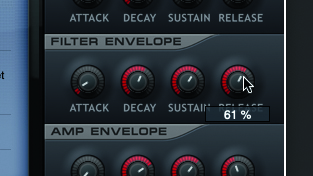The 40 greatest synth sounds of all time, No 10: Pet Shop Boys - West End Girls
Here's how to make this deceptively complex bass patch
The formation of Pet Shop Boys was a largely unremarkable tale - Smash Hits journalist meets architecture student while purchasing a synth (Korg MS-10) at a hi-fi shop. The story of how their smash hit single, West End Girls, came to be, on the other hand, is a bit more... convoluted.
The single was recorded and released not once, but twice, and both versions were successful, one as an underground club 12”, the other as a worldwide smash.
At the start, Pet Shop Boys Neil Tennant and Chris Lowe worked with famed American Hi-NRG producer Bobby O (Bobby Orlando), with whom they recorded a dozen tunes, West End Girls among them. On the initial version of the tune you can hear Orlando playing nearly every part, with the exception of the bassline and a single chord, both of which were provided by Lowe.
Released in 1984, this comparatively stripped-down, minimal version of the tune was a hit with DJs in San Francisco and LA and charted in Europe.
Eventually, the duo extracted themselves from their contract with Orlando and signed with EMI, for whom they re-recorded the song with Stephen Hague in the role of producer.
This time around, they tracked their synthpop/hip-hop mashup at London’s Advision Studios, making use of the facility’s 24-track deck and SSL console while there.
Kicking off (no pun intended) with the instantly recognisable Oberheim DMX drum machine and layered string samples from both E-mu Emulator I and Emulator II, the meticulously-programmed rhythm parts are driven along by a thick, analogue bass line.
Want all the hottest music and gear news, reviews, deals, features and more, direct to your inbox? Sign up here.
Played - not sequenced - by Lowe, the seemingly simple bass sound was created with a Roland Jupiter-6, layered via MIDI to a Yamaha DX7 percussive patch played in the lower registers. An Emulator bass drum is also there, played chromatically along with the rest.
This layered bass propels the tune along, from start to finish, the perfect underpinning for the laidback spoken word lyric.
This time, the song was a worldwide smash, rising to the top of both US and UK charts.

Step 1: If you’ve read our description, you’ll know that the bass heard in West End Girls is anything but a simple patch, requiring no less than three instruments to create its distinctive thump. However, we can get quite close with a single instrument - assuming that instrument is one as good as Dune CM. Let’s instantiate it and load up an Init patch.

Step 2: We’ll start with our oscillators in the upper-right. Osc 1 is set to a sawtooth – and that’s ideal. For Osc 2, we’ll click the Sel button and use the up/down arrows below it to select wave number 14. This is more complex than usual analogue waves and will help us get closer to the stacked sound of the original.

Step 3: We’ll use Osc 2’s Semi knob to lower the pitch by 12 steps. Next, we’ll set the Osc Mix to around 26%. We’ll select the triangle wave for Osc 3, and set its level to about 31%. This is a pretty thick sound, and will give the filter something to chew on. Now we’ll move on to that filter section.

Step 4: Select the Lowpass 24dB filter model to better match up to the filter on the original Jupiter-6. We’ll set the Cutoff to around 28% and the Reso to about 24%. We’ll set the Key Track to 27% or so. The filter envelope plays a big role in this sound. We’ll set the Env amount to around 60%. Now to shape our envelopes!

Step 5: Let’s do the amp envelope first. There, we’ll leave our Attack as is, and set the Decay to 71%. Our Sustain level can be set to, oh, 64% or so. We might need to tweak this later. Now, we’ll push the Release up to around 44%. We can’t really hear it yet, as the Filter Env needs to be tweaked.

Step 6: Nudge the Filter Env’s Attack up to around 9%. Now, set its Decay to 59%. Set its Sustain level to around 63%. Finally, set the Release to 61%. This gets us quite close to the sound of the complex sound of the original bass patch. Feel free to tweak it further – or even stack it with another synth of two!
Computer Music magazine is the world’s best selling publication dedicated solely to making great music with your Mac or PC computer. Each issue it brings its lucky readers the best in cutting-edge tutorials, need-to-know, expert software reviews and even all the tools you actually need to make great music today, courtesy of our legendary CM Plugin Suite.
